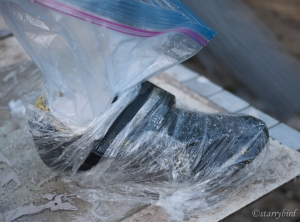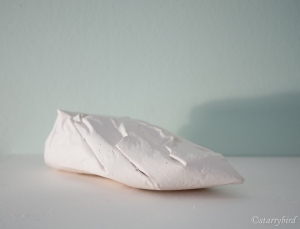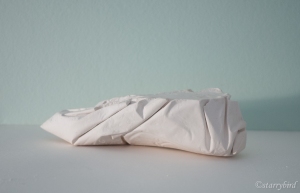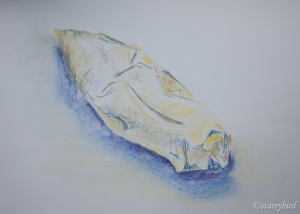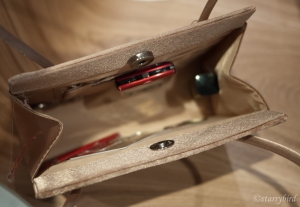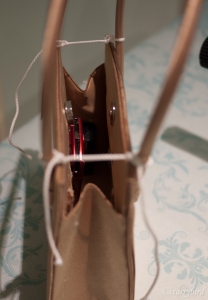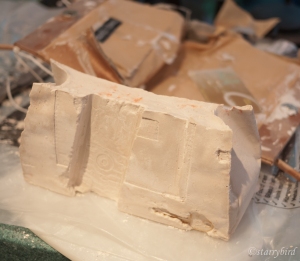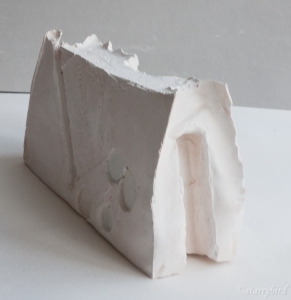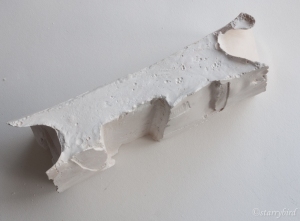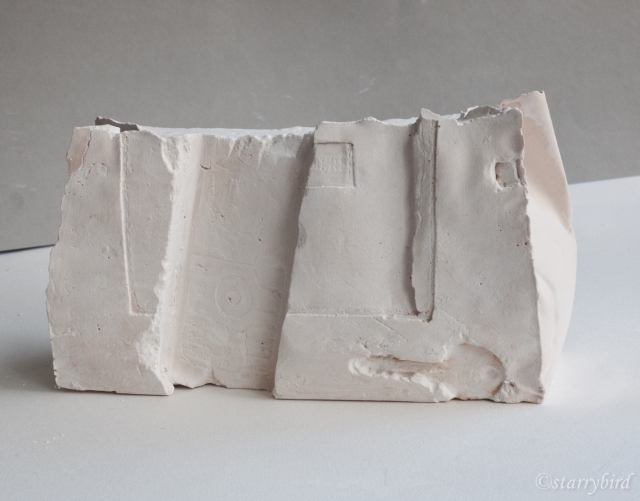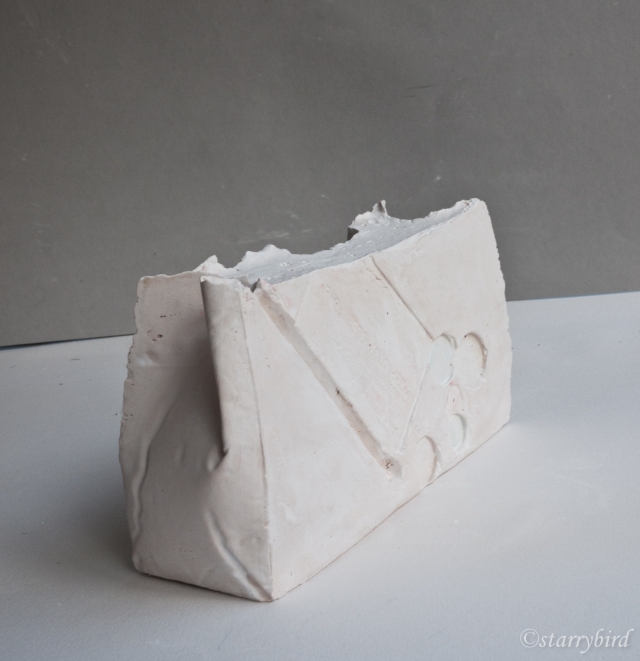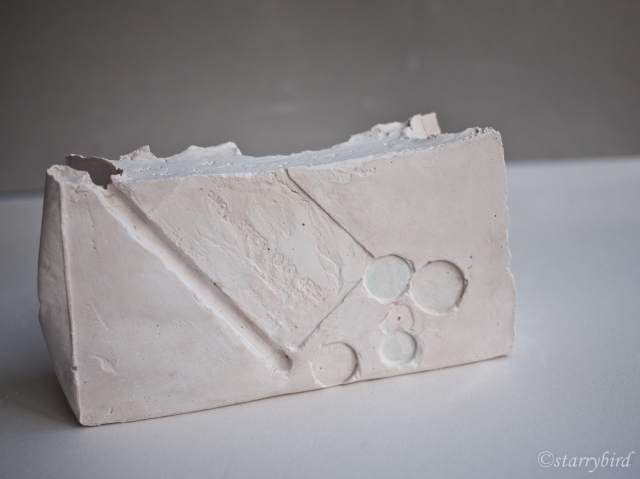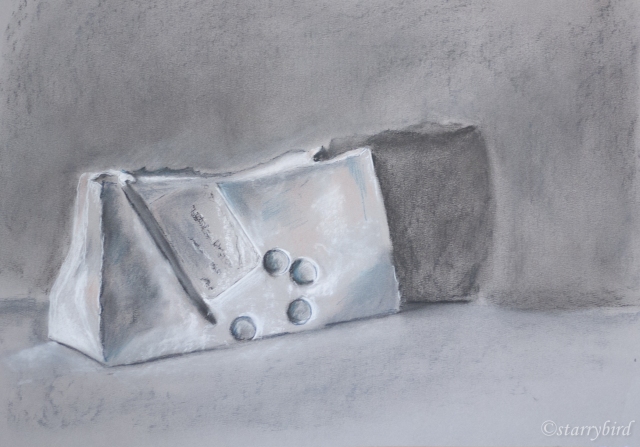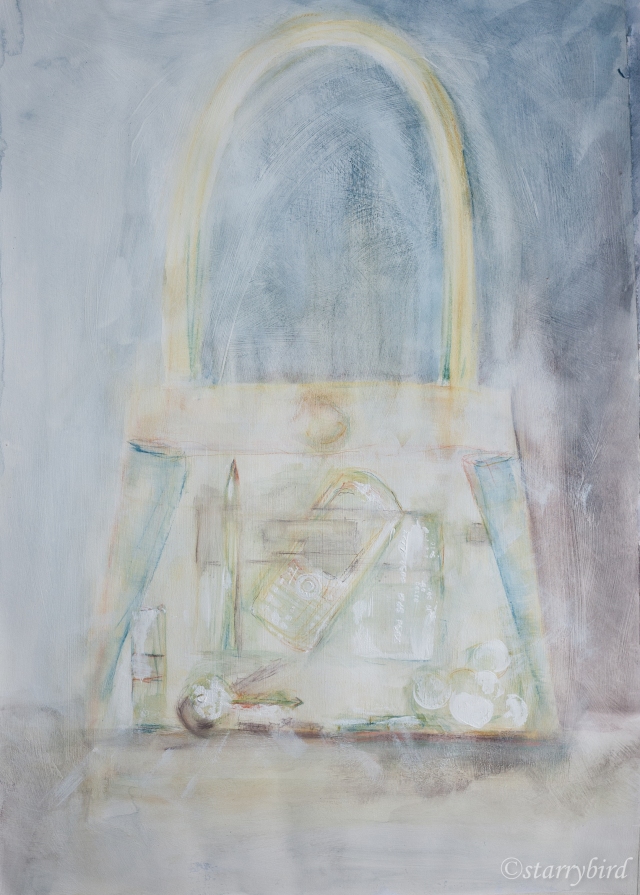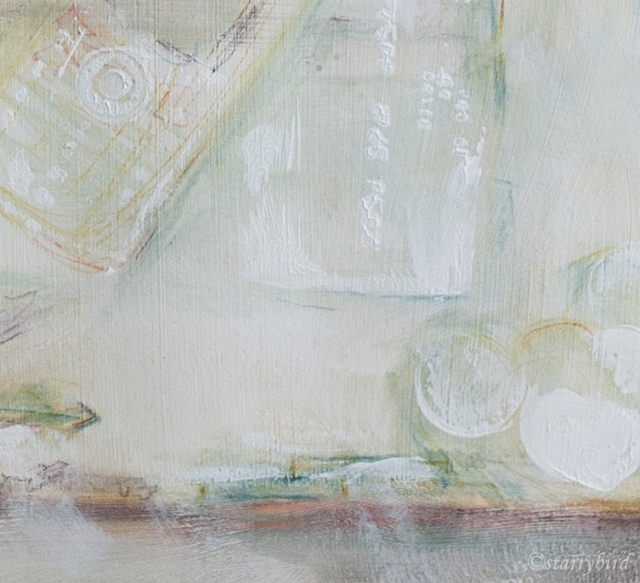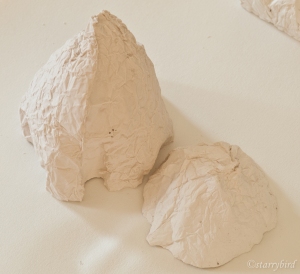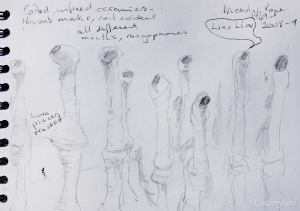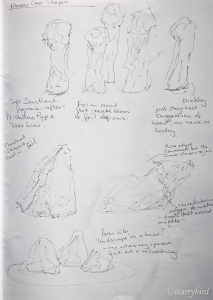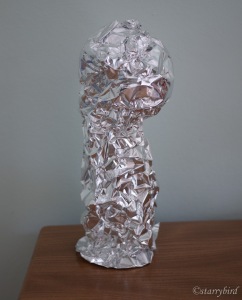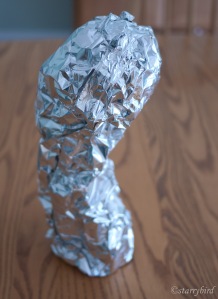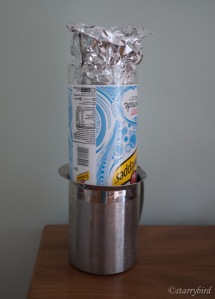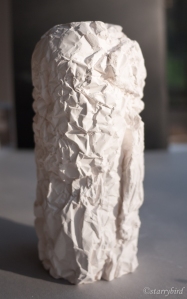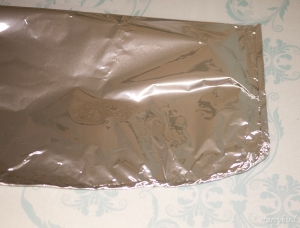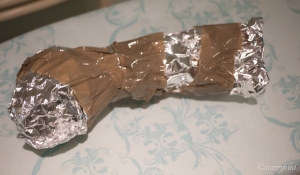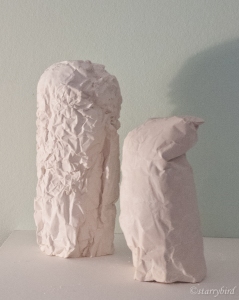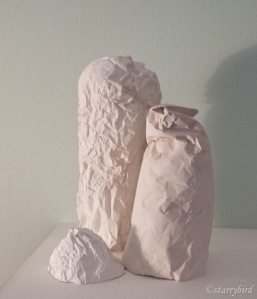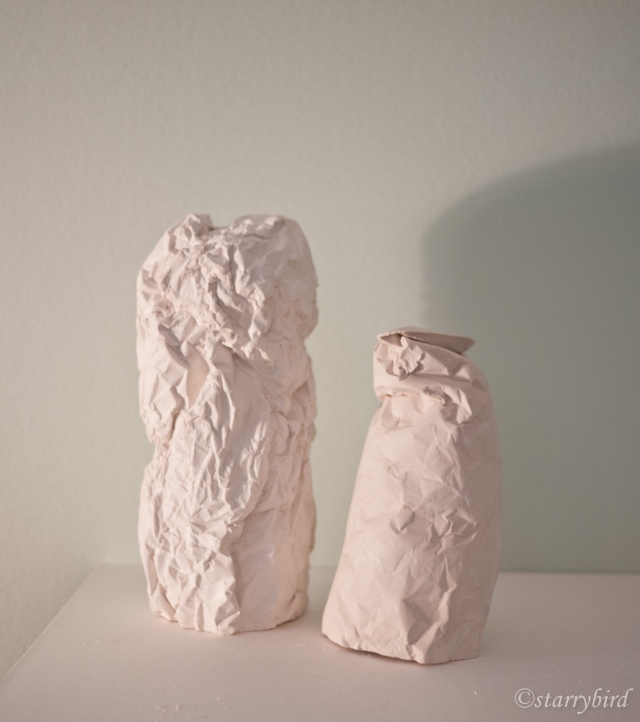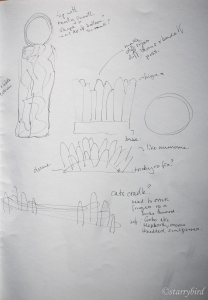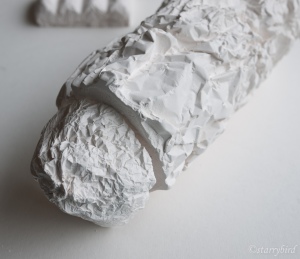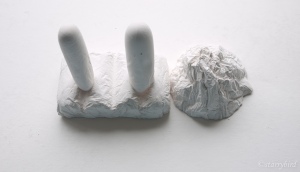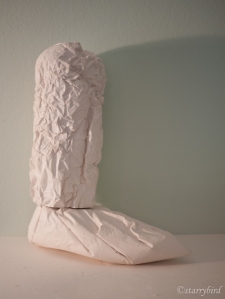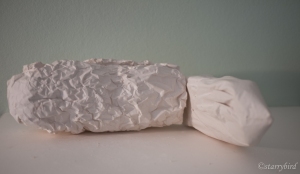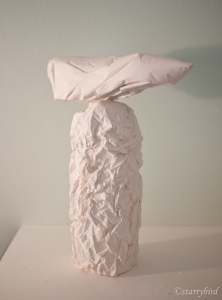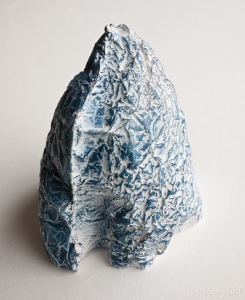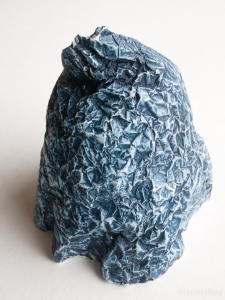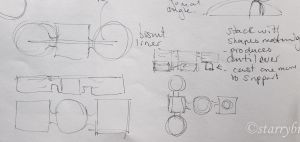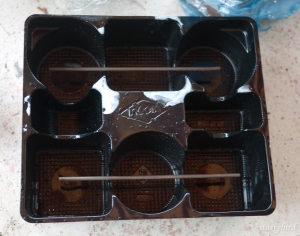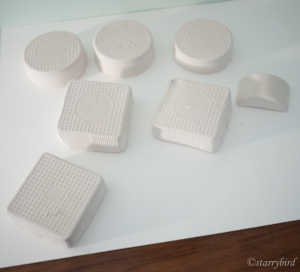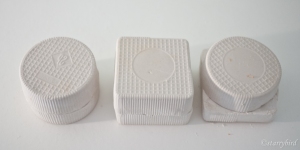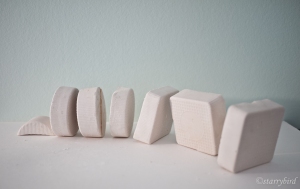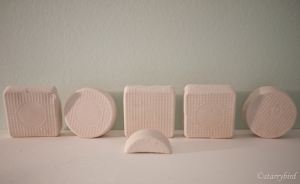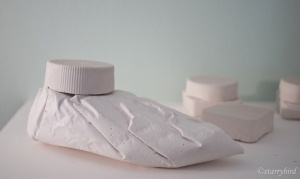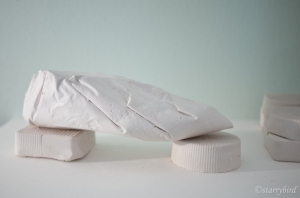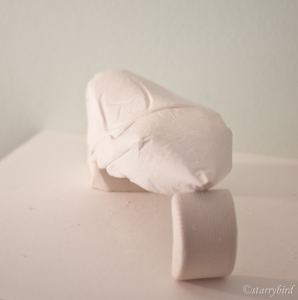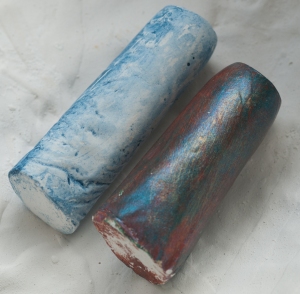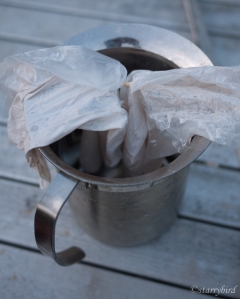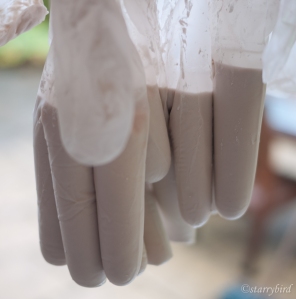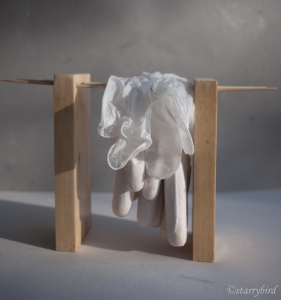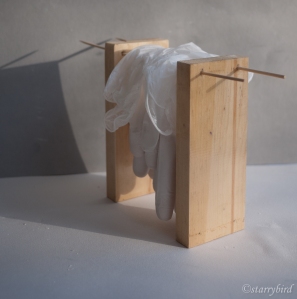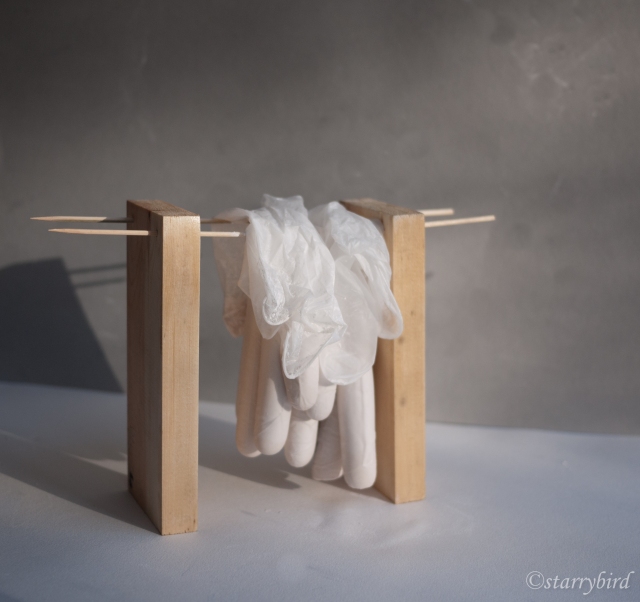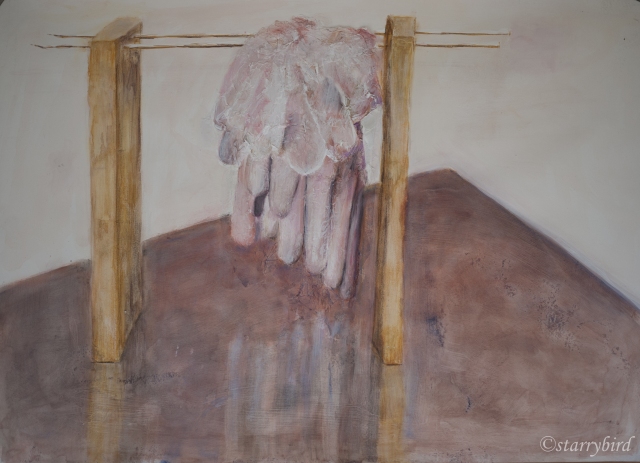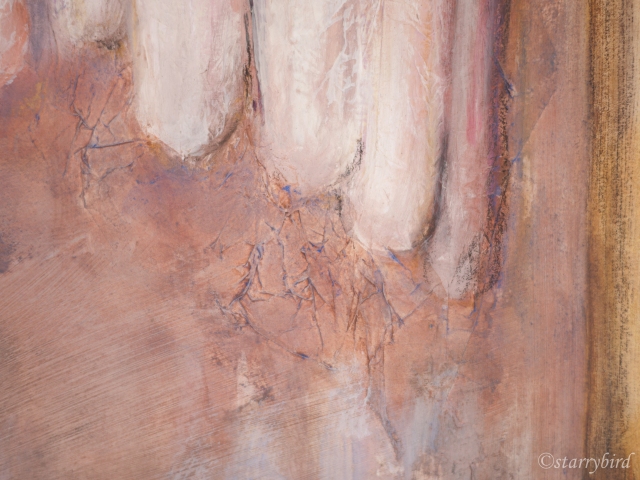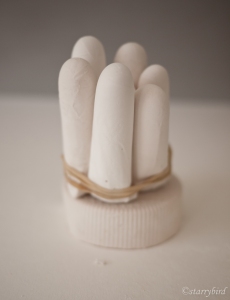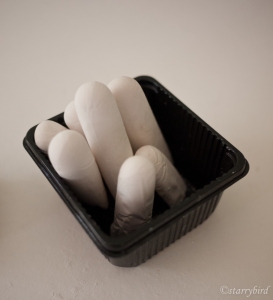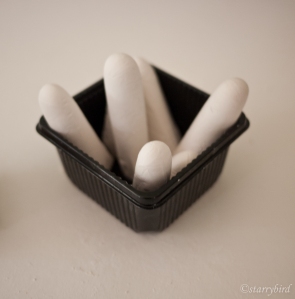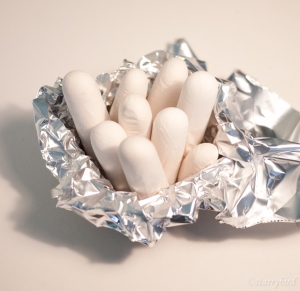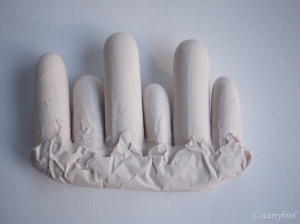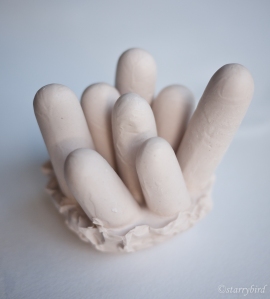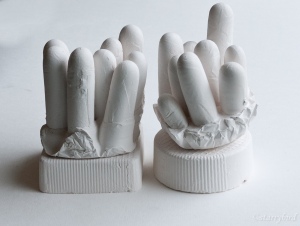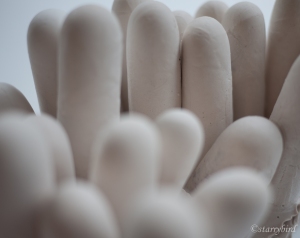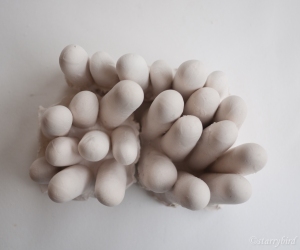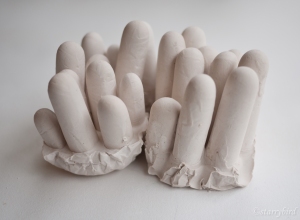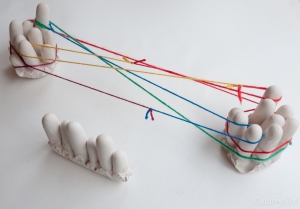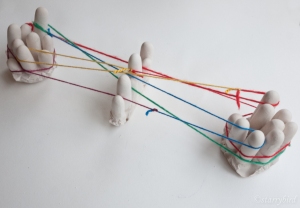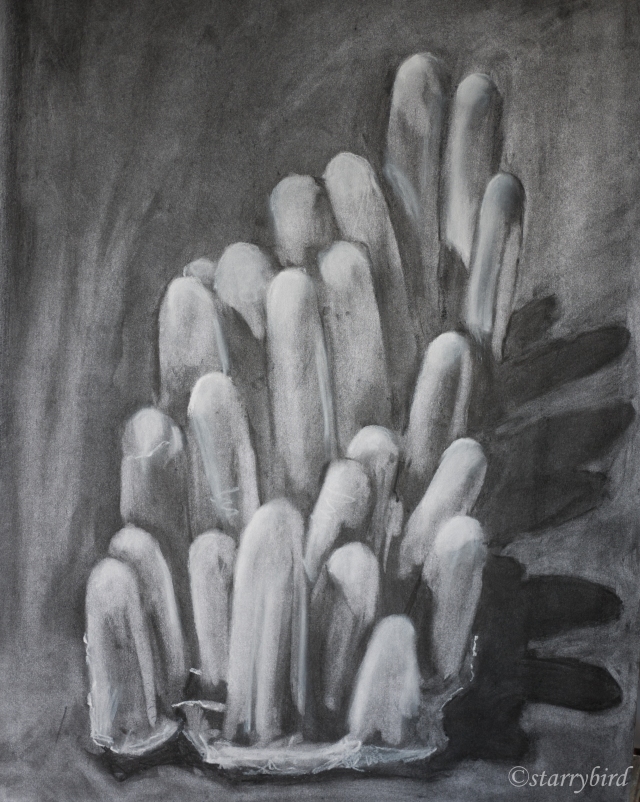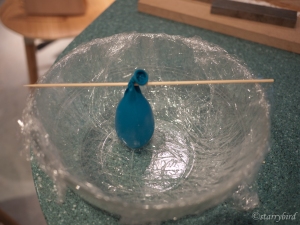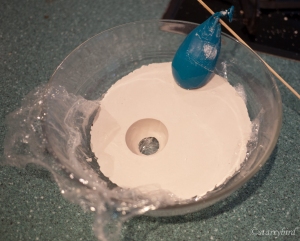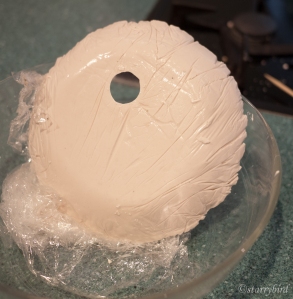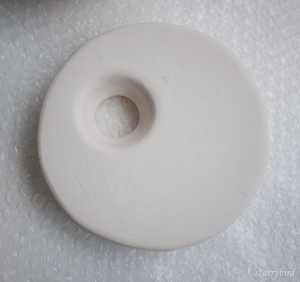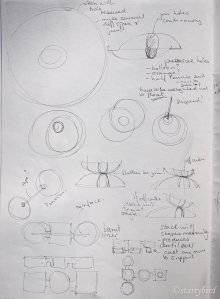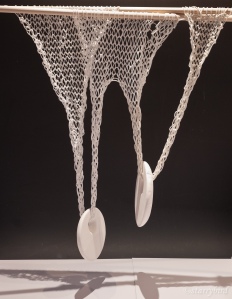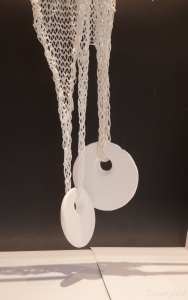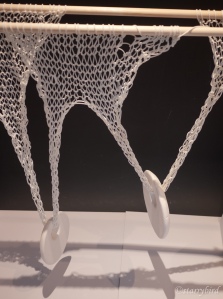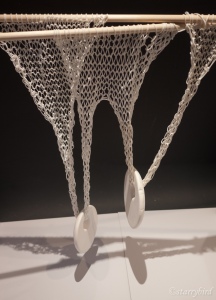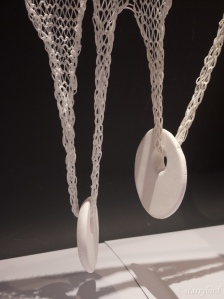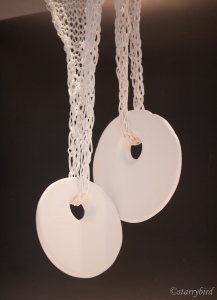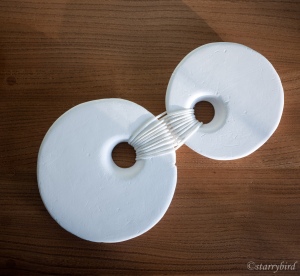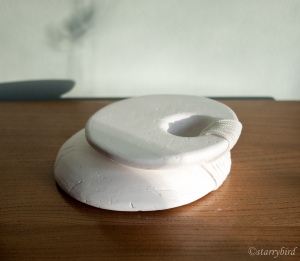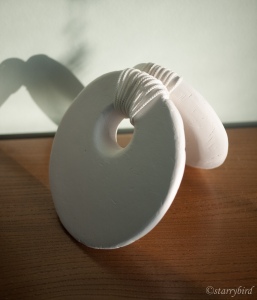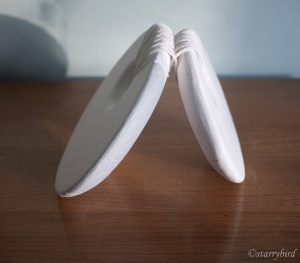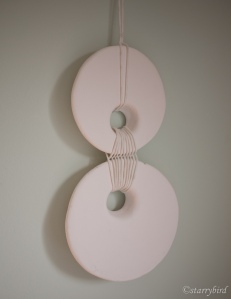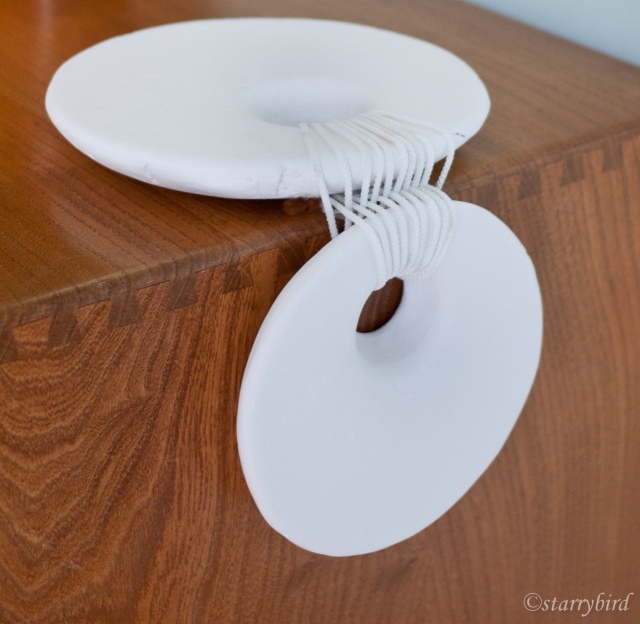- Work Inspired By Rachel Whiteread’s internal, private spaces.
My research into Rachel Whiteread’s sculptural work has inspired me to look at the theme of hidden, internal, private space. Private, personal spaces where other people don’t intrude might be one’s bedroom, bathroom or potting shed, but for me, and I suspect most women, and maybe, increasingly, men, my most personal space is my handbag. I think that its contents could almost be seen as a self portrait. The intimate detritus of life tells a story of who we are and where we have been. The other private personal space I could think of was inside a shoe. Shoes evoke the presence or absence of someone; I can tell who is around by looking at the door mat.
Objects have often stood for the individual (or their absence) in art. Van Gogh famously evoked the absent Gaugin in ‘Paul Gauguin’s Chair’ 1888 which seems to have been modelled on Fildes depiction of Dicken’s empty chair (Metzger and Walther, 2006) after the latter’s death (Letter 252 et al vangoghletters.org). The photographer Camilla Catrambone has produced ‘object portraits’ of her family which say a surprising amount about the people they portray. Tracey Emin’s ‘My Bed’ can be seen in the same context, capturing a personal essence but also, like Whiteread, a moment in time.
My first attempt was to try to cast the inside of a shoe. Clearly, the shoe would have to be pretty watertight and either easily cut off or opened to extract the plaster. Internal details of fastenings would also be good. Prior to a refurbishment earlier in the year, everyone had a good clear out, and no one in the family was prepared to offer a suitable sacrificial shoe. However, I did think that my son’s cycling shoes would be good if I could protect them since they had velcro opening right across the top. I lined the shoe with a watertight plastic bag which was the right volume and protected the rest with clingfilm.
The resulting cast was foot shaped but the plastic had masked the internal texture and created wrinkles and a pointed toe. I think it is quite interesting but isn’t quite the personal object I was looking for, depicting my son through his love of road cycling, which I hoped to do through the fastenings and the clipless pedal fittings in the bottom sole.
I drew the foot in pastels, trying to interpret the tones as colour, but this is a really unsuccessful drawing. The underlying problem was that I was not able to interest myself in the form; it doesn’t engage me. Drawing is an interesting test of a sculpture in more ways than I had realised. I had another go at sketching using charcoal, looking all around the cast and trying to be freer.
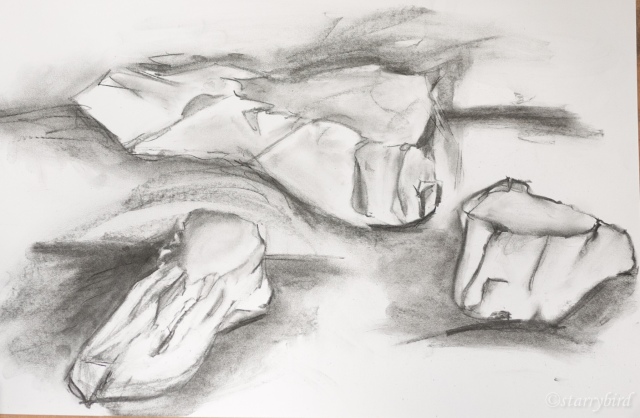
A2, charcoal
Disappointed with the shoe, I turned my attention to the possibilities of casting a handbag. My objective would be to create a cast of the inside of my handbag complete with a variety of personal items. This clearly presented some technical challenges, most immediately, how to contain the plaster. I selected a handbag with deep sides but with a zip extending all the way down them so that the bag could be cast shut but unzipped to extract the cast. I experimented with lining the bag with plastic bags of various thickness and size. Clearly the bag would have to be absolutely water tight and fill to the extremities of the handbag thereby taking on the complete form whilst having no extra tucks or gussets. I tested various bags with water and concluded that this wasn’t possible with any bag I could source. I would have liked to cast a favourite, personal bag but haven’t a suitable one which I am prepared to sacrifice by not lining it.
My next option was to visit the local charity shops and find a surrogate bag. I was looking for a fairly small bag so that internal items wouldn’t be insignificant, some internal detail, structured design and a material which would hold plaster but which could be cut off.
Having selected a small bag, I also found a number of objects to represent those you might find in my bag; a pencil, key, coins, an old mobile phone, a lipstick and credit card. The criteria for selection were a hard, shiny surface, ideally with some details that would be captured, a flat face which would be stuck to the wall of the bag, no undercut sides and disposability. The pencil was cut in half using a chisel.
These items were attached to the walls of the bag using hot glue and then the whole of the interior was painted with neat washing up soap. I knew releasing everything would be an issue and was particularly anxious about the fabric wall of the bag. I did consider coating the inside with acrylic paint, but I thought the brush marks would be clear and the internal texture compromised.
The handles of the bag were tied together to ensure that the pressure of the plaster didn’t spread the bag too much, losing the shape.
The bag was placed inside a plastic bag to control any leakage and plaster was poured in up to the brim of the side walls. Unfortunately, I was unable to include the catch which would have been an interesting detail.
Removing the bag from the casting proved to be easy but the objects were retained, the glue having failed. They had to be chipped out very carefully and this has resulted in slight damage. The pencil had a red lead and this has coloured the plaster in places. Similarly, the metal objects have produced verdigris or rust marks. The plaster doesn’t seem to have produced a very crisp surface and I wonder if this is because of the detergent layer.
I considered how this could be developed with a surface finish. I could sand the top flat, but I think where the plaster has shrunk back from the edges is more eloquent of the fabric walls. I could colour the faces to better reveal the textures, especially details such as the label, phone keypad and credit card, but the plain white evokes the negative space and ghost-like feel of the secret space. I have used a thin white wash of gesso to soften but not erase the rust, verdigris etc.
To draw, the cast was lit obliquely to create hard shadows and describe the depressions. I tried to observe carefully, but the shadow behind the cast looks rather strange.
This second drawing is a drawing of the idea of the sculpture rather than the sculpture itself. I have drawn the original bag and then almost rubbed it out to render it ghostly. I have then drawn in contents and repeated the process. Gesso has then been applied to the objects and stamped onto the drawing. This has created chunky raised detail in white. I have tried to create a kind of ghostly, x-ray image where the most solid parts of the image are like memories of the contents.
This cast seems to me to be more successful in the idea than the execution. I could perhaps approach the idea differently by constructing an inside out handbag, or lining, out of fabric onto which I had already printed digital images of contents. I could use negatives or cyanotype prints of items to suggest x-ray images. The fabric would then be stiffened and padded to stand up. Alternatively, I could print a series of digital prints on acetate, layered up like a series of xray/MRI slices. Another development might be to consider the inside of pockets by making an inside-out pocket with printed or appliqued items, and then sewing the pocket on to the outside of a garment. I don’t seem to be able to help trying to bring printmaking, sculpture and textiles all together.
2. Development of fractal shapes
In Project 7, I looked at creating texture using silver foil, and wanted to extend this idea to creating castings which were more vertical.
I was also inspired by our recent study visit to the Tate to see the Hepworth exhibition where I had seen Nicholas Pope’s Lair Liar and Moore’s sculptures.
What impressed me about these works was their sentinel, almost sentient quality, the feeling that they represented an almost alien intelligence. Pope’s work, in particular, reminds me of Robert Graves poem about indescribable creatures emerging from a cave. I hoped to give my castings a similar feel by creating a column form with just a hint of a head.
I created a form by making a tube of heavy gauge foil, rolling and folding the join edge repeatedly to create a seal. The foil was crumpled and formed over my fist and then placed into a pop bottle with the bottom cut off, to support it. I hoped that this would be sufficient, but the pressure of this volume of plaster pushed the sides out and split the seam.
With some difficulty and slight damage, I managed to extract my casting, but the ‘head’ had been lost.
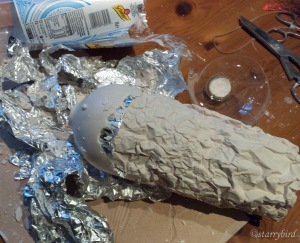
I tried again, this time using brown tape to constrain the shape in order to hold a smaller volume of plaster. I tested this with water but the whole mould exploded under the force.
I had a number of further attempts but the process only worked once at this scale.
I tried combining these shapes with some of the others cast, but could find no worthwhile connection.
I tried applying colour to one of the small pieces, brushing shoe wax into the texture and wiping it off the high points and, on the other side, dry brushing colour onto the high points. I think the latter was more effective but both techniques damages the delicate, crisp edges of the texture, which I think is the major attraction.
3. Packaging
I have been saving packaging against this project and selected this biscuit tin liner to try to cast related, joined shapes which I could subsequently stack. I cut two metal rods to reinforce the castings and poured plaster up to the level where the intervening shapes connected, the maximum height without filling the whole package. The bottom of this sketchbook page shows what I was planning.
As the plaster dried, it shrank back and the rods were insufficiently embedded to hold the casts together.
I played about with stacking them but I find these very regular, manufactured shapes completely uninvolving.
They are a bit more interesting grouped to create a rhythm with a kind of body language between them.
I extended my play with the earlier shapes….
Trying to combine shapes which don’t relate to each other just wasn’t working for me, and the mechanical packaging shapes don’t involve me. However, I did like the idea of casting many similar but different shapes which could be piled up.
For my original experiments into surface finishes, I had cast fingers in disposable gloves and these could offer this opportunity. The shapes are organic, can be produced in some volume and, if I only cast the fingers, rather than the whole glove, the shapes would be less obvious.
I supported the gloves in a metal jug using bamboo skewers.
Before I turned the castings out, I really liked the way they looked, hanging together in the gloves with the thin vinyl looking rather like flayed skin. I felt that this connected to my earlier research into Eva Hesse and her use of soft forms and materials like latex, combined with harder materials.
I rethreaded the gloves onto the bamboo skewers and looked for something to support them on, so that they could be seen. The wooded strip I had used for casting the bas-reliefs was to hand and the smallest of these was just the right height. Even more fortuitously, I realised that the bamboo skewers would go through the screw holes. The gloves look like some animal carcass. This is a happenstance work made from bringing together the components used in the process of casting. I find this piece much more interesting than the plaster alone.
I painted this on gessoed paper using gouache and acrylic paint. Tissue paper was collaged for the gloves, to create a wrinkled, organic effect. I have got the distance between the uprights too great and I have failed to capture the soft, floppy plastic.
I added tone and colour with soft pastel scrumbled over the texture. This drawing was very enjoyable, in spite of its limitations. I found myself far more engaged with this assemblage than the earlier casts (apart from, perhaps, the handbag). Using paint was a pleasure but I really feel my total lack of experience in painting.
I then returned to the individual fingers and how I might aggregate them. I wanted to consider the angles and spaces between them. I considered holding them in place with cord or a rubber band whilst they were glued to other casts. Ideally, I would have liked to have attached them to a convex dome to resemble an anemone, but this would have been very difficult structurally.
I also tried positioning then inside small containers which would support them whilst they were joined with more plaster. I thought this would create the more interesting relationships.
I then thought it might be a better contrast in textures to re-cast the fingers in a tray of foil.
This was tested using a row of fingers in a small foil lined cardboard tray. The foil was first filled with a little water and the fingers stood in it for a minute or two to get damp. The water was then replaced with plaster. When this proved successful, I repeated it with fingers in the biscuit packaging tray.
The slightly haphazard arrangement, and the smoothness of fingers against irregular base works well. I considered combining them with the casts of the packaging i had used to see if this created a rhythm of shapes but I don’t think it adds anything.
The casts were then massed up to create a small forest of fingers. It would have been great to produce these fingers on a larger scale, but, or course, my scale was dictated by the gloves. I could however, produce as many fingers, in as big a tray, as I wished, or had plaster for.
The fingers reminded me of the playground game ‘cats cradle’ and I experimented with joining the pieces with thread. I used thick coloured thread so that it would show up against the plaster but only had this in short lengths so I made a virtue of necessity by combining different colours and making the knots obvious. This isn’t particularly exciting but I do like the contrast of thread and plaster.
I did consider whether to employ a surface treatment for these but it would be extremely difficult to apply one between the fingers. I could dip the pieces in paint but if the choice is between one all-over colour or another, I prefer the natural shining quality of the white plaster.
The massed fingers were drawn by covering an A2 sheet of cartridge paper with crushed charcoal and drawing into it with a putty rubber to carve out the soft shapes.
The rim light was picked out in white chalk and shadows worked back into with charcoal. I have got the perspective wrong; the fingers at the back are too big and too far apart. The technique has captured the soft forms and the almost luminous quality of plaster. There is great pleasure in the physicality of drawing like this.
4. Smooth forms.
In parallel with thinking about crinkly structures, I considered how I could create a smooth, curved form inspired by Hepworth. Piercing the form was an obvious way to add more interest. I played around with water and balloons, hoping to cast inside a balloon but the tension of the balloon would only permit a small volume. An alternative was to consider casting around the balloon as a negative space. I chose a bowl lined with cling film to cast in as it would relate to the shape of the balloon. To stop the balloon floating, it was filled with water from a funnel and weighted with 5 pence.
The clingfilm texture is more obvious than I had hoped but perhaps a little sanding would sort that out. I cast another disc like this, in a larger bowl, but the size of the balloon dictated the depth. This used up my last plaster, 35 kg used in all.
I considered ways of joining these by gluing, stacking, threading or any other means I could think of. Thinking of my earlier knitted sculpture in Part 2, the weighted, knitted bas-relief and the ‘cats cradle’, I thought that joining using thread would be interesting because I could thread the pierced forms. The pieces were smoothed with a surform and then sand paper. Some irregularities were too deep to sand out effectively without loosing a lot of material, so were accepted as part of the form.
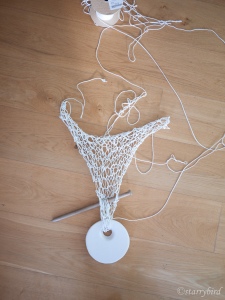
Experimenting with knitting and threading.
I experimented with knitting to create volume and intersections. The stitches were threaded onto two pieces of dowling which could be moved relative to each other and the stitches could be slid together or apart to try out different arrangements.
One value of using thread is that the effects of gravity and mass can be demonstrated. It is also reversible so that the form can be unraveled and restitched at a different scale, folded, looped, stretched or compressed. I enjoy the way that this can be manipulated to create a different conversation between the two disks. The effect of gravity creates curves in the knitting which would have been more graceful and delicate if I had knitted in finer thread. This is the attribute of knitting (or crochet) used so effectively by Ernesto Neto or Christina Mackie, but I was looking for a more solid, textured structure (and also had time considerations). Another asset of knitting as a way of joining is its reversibility. I was able to unravel all this and try a more minimalist approach to joining. Here a thread was just passed backwards and forwards between the two pieces to bind them together.
This binding allowed them to be placed at different angles to each other (or distances).
For such a very simple concept this is surprisingly versatile. I particularly like it hung over a 90 degree edge; gravity suspended.
This very simple combination of smooth shapes exploits the character of the plaster and is a complete contrast to the earlier cast forms. Gravity, thread and tension have become recurring themes, feeding from one piece into another.
Reflection
I have tried to take a wide variety of approaches to this project, not necessarily those suggested in the course notes. My most interesting casting idea was the inside of a handbag, even though the resulting cast was not as visually interesting as some of the others.
Casting in foil produced some great textures but I couldn’t control the form as I wished and the irregular edges and facets meant that these couldn’t be joined together effectively. I think they stand better alone or in a group relating to each other.
I couldn’t find a way of making many of my casts of smooth interior or plastic bags or packaging interesting. I had to find a way of creating some haptic or organic element to engage with. The multiple casts of fingers aggregated into a form, both within the gloves and independently, were, to me, much more engaging. It seems to me that plaster casting of internal spaces inherently leans towards minimalism, whereas my creative interests generally lie in colour, texture and the obvious hand of the artist. This has been a very difficult project to make my own.
References
http://vangoghletters.org/vg/letters/let251/letter.html#n-11 Accessed 6 November 2015
http://www.theguardian.com/culture/2004/mar/06/art Accessed 6 November 2015

